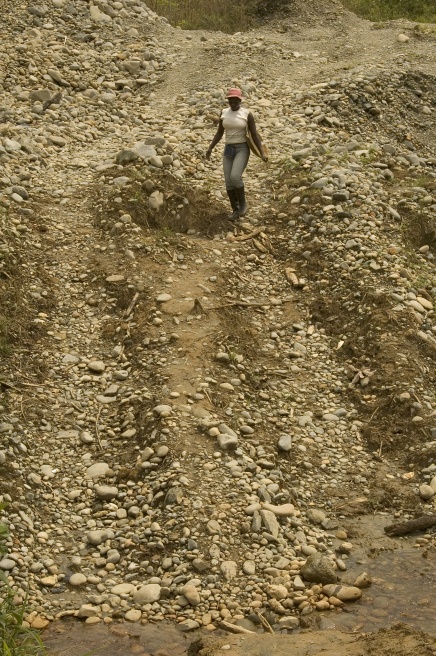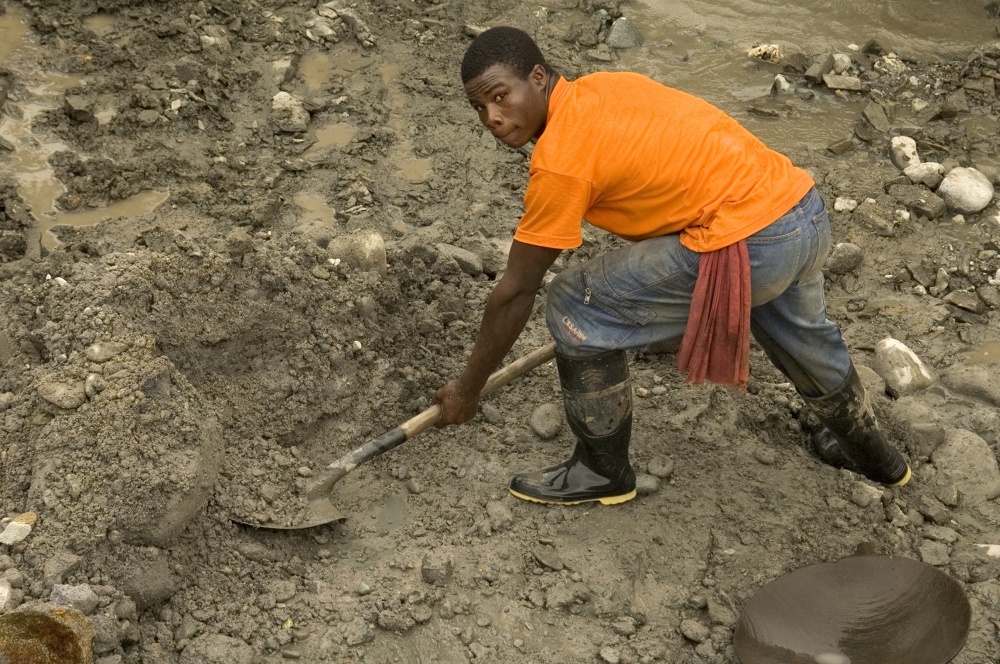In rivers and streams of Colombia’s El Chocó region, traditional artisanal panning for gold is being replaced by mechanized mining. This new practice represents a threat to traditional economic and social structures, as well as to Chocó’s rich rain forest environment. And there looms the even greater threat of large-scale mining by transnational corporations.
In this project I am documenting the work and lives of grassroots miners, and looking at the communities affected by these changes and the threats and dangers they face. This is a project done in active collaboration with affected communities.
Large-scale extraction of petroleum, gold, coal, precious industrial metals and other raw materials increasingly threatens habitats throughout the world. Some areas recently in public scrutiny include Central America, Central Africa, Brazil, Chile, Canada, the United States and Colombia. In Colombia a variety of habitats are under threat from actual or proposed mechanized mining. This project focuses on the El Chocó region in the Pacific northwest of the country. It’s an area of tropical and sub-tropical rain forest, one of the wettest places on earth, with great diversity of flora and fauna.
Native communities thrived for thousands of years in this environment before the arrival of the Spanish, who enslaved the locals and also imported Africans to produce gold. Their Afro-Colombian descendants have been living on the generosity of the forest for hundreds of years, their cultures based on river and swamp habitat. The subsistence economy of these cultures have included planting, hunting, fishing, and cutting lumber primarily for their own consumption. In addition, panning for gold provided cash for things not locally produced, such as tools, cloth, salt, or utensils.
Traditionally, extracting and refining gold has been a part-time activity. This activity, which still goes on in some villages in its traditional form, has barely any environmental impact. Relatively little earth is turned over from river and streambed. The few holes opened in the forest floor are small and shallow. Artisanal miners do not use mercury or cyanide to refine gold.
But in recent years sky-high prices of gold have brought mechanized mining to this area. Scores, if not hundreds, of large backhoes have been brought in to open large pits in search of gold. They push aside and discard the thin forest topsoil to dig large pits. Tons of silt and rocks, oil and chemicals are dumped into the streams and rivers. Mercury is added to refine the metal, and the resulting amalgam is burned in open air, endangering the environment and the health of people in the communities.
After the machines finish with a section, or sometimes even while they are still working, local people come and set up artisanal panning operations. They work full time, which means they are abandoning their traditional subsistence economic activities, which have defined them culturally and supported their families.
This newer mechanized mining has provoked divisions within the Afro-Colombian and indigenous communities that make up most of El Chocó. Some individuals and communities see great economic opportunity, while others see a threat to their forest and their way of life, and question the economic benefits.
As serious as these problems are, a much greater threat looms just over the horizon. The Colombian government is promoting even larger-scale mining by trans-national corporations. In El Chocó, the communities, even those favoring current mechanized practices, are nearly unanimous in opposition to this development.
This project grows out of my long engagement with these communities. I have been working and taking photographs in Colombia’s El Chocó since 2003. My article on gold mining in El Chocó—accompanied by photographs of mine and drawings by the artist Mary Kelsey—will be published in ReVista, the journal of The David Rockefeller Center for Latin American Studies of Harvard University, in early 2014.
To date, these images have been published mostly by the organizations of the affected communities, and by different offices of the Catholic Diocese of Quibdó, in the region. In addition, some of these images and others from this project have been exhibited in Quibdó, Medellín and Bogotá, Colombia, and in Germany, Argentina, Chile, Ecuador and in various venues in the US.





































